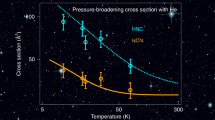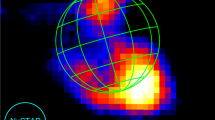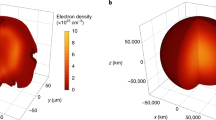Abstract
MENZEL1 has recently stated that “There appears to be a widespread misconception concerning the effect of electron collisions on the intensities of forbidden lines”. In the conventional treatment to which the above statement objects, the intensity is given by the formula where M is the number of atoms excited to the upper state per unit of time, A21 is the probability of spontaneous emission and b21 is the probability of removal from the upper state by collision with electrons, atoms, molecules, etc. b21 in general increases with the density of these particles and is proportional to the density if the composition and velocity distribution are not altered. In this case, I remains approximately at the value Mhv as long as the density is so low that b21 « A21. When b21 » A21, however, I = MA21hv/b21, that is, I falls off inversely as the density if M, the rate of excitation of atoms excited to the upper state, is held constant.
This is a preview of subscription content, access via your institution
Access options
Subscribe to this journal
Receive 51 print issues and online access
$199.00 per year
only $3.90 per issue
Buy this article
- Purchase on Springer Link
- Instant access to full article PDF
Prices may be subject to local taxes which are calculated during checkout
Similar content being viewed by others
References
NATURE, 142, 644 (1938).
Author information
Authors and Affiliations
Rights and permissions
About this article
Cite this article
BOWEN, I., MINKOWSKI, R. Effect of Collisions on the Intensities of Nebular Lines. Nature 142, 1079–1080 (1938). https://doi.org/10.1038/1421079b0
Issue Date:
DOI: https://doi.org/10.1038/1421079b0
Comments
By submitting a comment you agree to abide by our Terms and Community Guidelines. If you find something abusive or that does not comply with our terms or guidelines please flag it as inappropriate.



